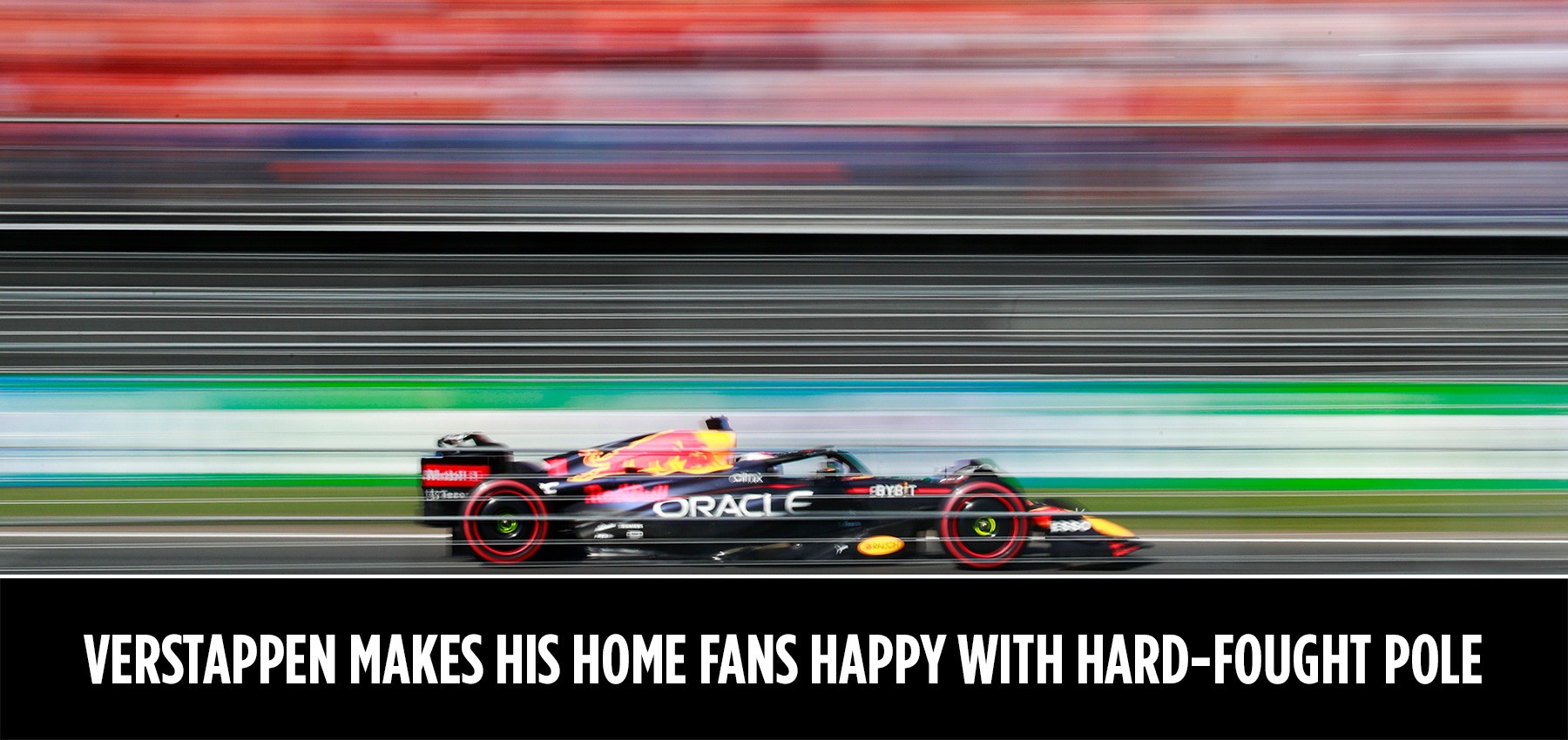2022 Dutch Grand Prix – Saturday
THE ROAD TO POLE
- Red Bull’s Max Verstappen claimed a home pole position, using the P Zero Red soft tyre from beginning to end of qualifying, ahead of the two Ferraris of Charles Leclerc and Carlos Sainz. The top three were covered by less than a tenth of a second.
- All the drivers used the soft from start to finish of qualifying, which was dry and warm with 30 degrees ambient and 41 degrees of track temperature. Tomorrow, there’s a 40% chance of rain currently forecast.
- The soft tyre showed low degradation even on a full fuel load in FP3 (where Leclerc went fastest).
- The Pirelli Pole Position Award was presented by one of the biggest sporting personalities in the Netherlands: ‘the King of Kick Boxing’ Rico Verhoeven. Rated as number one in the word and considered a role model for youngsters throughout the country, Verhoeven is also a well-known ambassador for family values and positivity, pushing fairness in fighting beyond the limits of sport. Verhoeven is passionate fan of supercars on road and track; he is currently finishing a film as well, due for release next year.
STRATEGY NOTEBOOK
The 72-lap Dutch Grand Prix is quickest on paper as a two-stopper, but that doesn’t exclude a one-stopper.
If going for a two-stopper, starting on the soft is a good idea. This could then be followed by two stints on the P Zero Yellow medium (if enough medium tyres are available within a driver’s allocation, as is the case for Red Bull, Ferrari and Mercedes) or one stint on the medium with a final stint on the soft again.
A one-stopper could either be medium to P Zero White hard or soft to hard (to have some extra speed at the beginning of the race). A soft-medium one-stopper is also possible, but it’s marginal for wear life, with a lot of pace management required.
Starting on the medium gives different options, but either a one-stopper or a two-stopper is still achievable even if starting on the soft.
There are a few variables affecting these theoretical calculations, such as the amount of degradation on the soft tyre and the amount of grip on the hard. This is an old-school circuit with not much run-off, and the action so far suggests that a safety car could be likely – which means a cheap pit stop. With this year’s generation of cars and tyres helping to overtake, track position might not be the priority that it was before: this could favour some more aggressive two-stop strategies. One more point: at 60kph, the pit lane speed limit is lower here than at most other tracks, meaning that it takes a bit longer to make a pit stop.


















